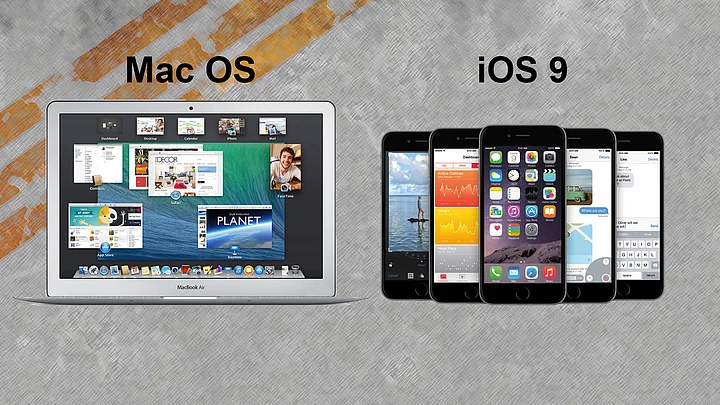Ever since the release of Mac OS X Lion back in 2011, Apple has consistently borrowed feature after feature each year from iOS, the software that powers its iPhones and iPads – from the ‘Launchpad’ app drawer in OS X Lion to the Notification Center in Mountain Lion, to the iOS 7’s flat and translucent design in OS X Yosemite.
Many iOS apps like Maps, Notes, Reminders, iBooks, Messages and Game Center have also made their way to the Mac over the years. Although Mac sales have grown in the past decade, there’s no comparing it to the number of iPhones sold. Plus, copying from their own product line isn’t such a bad thing – it actually helps in creating a more unified experience for users of both these Apple product lines.
Keeping up with that tradition, here are a few things we should see coming to a Mac that currently exist in the iOS world today.
Siri
Since its introduction in 2011 with iOS 5, Siri pioneered the concept of talking to your phone to get things done, and paved the way for competitors Google Now and Microsoft Cortana. Apple has taken Siri to the TV and has also expanded its utility with regional accent tweaks.
Her presence on the Mac to do things like setting up calendar entries, reminders, play that track you want to listen to on Apple Music etc would be much appreciated.
There could be a number of reasons why this has taken so long. One could be that the distance between the mic and your mouth is typically more on a computer since one normally brings the phone or smartwatch up close when dictating a voice command, resulting in better recognition.
Further, you may look weirder talking to a computer compared to a phone or a watch. Whatever the reason, with Microsoft bringing Cortana onto millions of computers with Windows 10 this year, we don’t see any practical reason why Siri shouldn’t be on a Mac today.
Touch ID
Fingerprint recognition is yet another concept that Apple took and made a very usable version of, which the industry now blindly follows. Considering a computer can also contain as sensitive information as your smartphone, locking it down securely and conveniently with a fingerprint is a no-brainer. And laptops have had fingerprint scanners for decades!
They were just not as good as Touch ID is today. I, for one, would appreciate unlocking my Mac, authorising App Store payments and accessing apps like 1Password with a fingerprint instead of a password. The only question remains: Where will the scanner be placed?
Unlike Apple’s older computers, most new MacBooks don’t have a separate power button; rather it is just another key in the keyboard layout. Along the same lines, people have said that the entire trackpad could be one big Touch ID sensor, allowing you to touch anywhere to unlock.
Low Power Mode
It’s probably happened to you – you’re away from your charger, working on something important when you see the few remaining drops of your MacBook battery draining away fast because some Google Chrome helper is chewing through 80% of your resources.
The ‘low power’ mode in iOS does basic things like dialling down the brightness, throttling down the CPU, reducing background activity – things that to my simple mind, sound doable on a Mac as well.
Google Search via Spotlight
Spotlight, the universal search feature since the last OS X update also understands natural language. But one of the most basic things that Spotlight on the Mac cannot do, which Spotlight on iOS does, is let you search for a query on Google. In iOS, you can choose Google as the default search engine, whereas, on the Mac, there seems to be no provision for that.
C’mon Apple, placing obstacles to let people do a simple Google search is distasteful. But until then, there’s Alfred.
WiFi + Cellular
When on the move, there’s no convenient way to get the Internet on a laptop. You can either use your phone as a hotspot, or a portable WiFi router, or worse, a USB dongle. It’s a surprise that Apple hasn’t built a cellular variant of their MacBooks, especially since their newest one has only one port. One also wonders why Apple hasn’t done this considering the high margins it makes selling the WiFi + Cellular version of each iPad.
And we all know how Apple loves its margins. It would also be a boon considering major telcos like Vodafone and Airtel let you share your monthly smartphone data with multiple devices.
So these were a few things that we’d expect the next Macintosh to get in the coming few years. What would you like? Tell us in the comments section below.
(Rohan Naravane is the Product and Communications Head at Pricebaba.com. He’ll be found mostly on Twitter @r0han, where he spends half his time praising Apple and the other half lamenting it.)
(At The Quint, we question everything. Play an active role in shaping our journalism by becoming a member today.)
